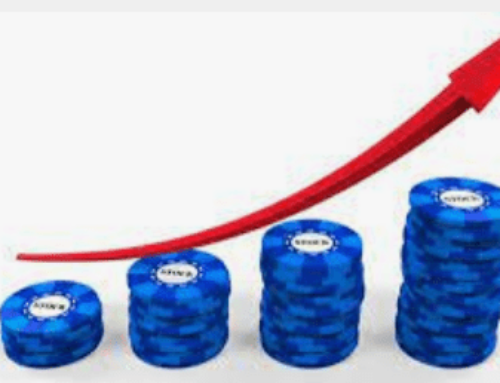What is Warren Buffett Indicator?
Introduction
In this session, we will discuss what is “Warren Buffett indicator” and how it can be applied to the Indian stock market.
Any indicator with Warren Buffett’s name associated with it will be taken seriously by the investor community- right?
So, it’s no surprise that this indicator is used around the world, especially in the developed economy and Indians are not too far behind!
As you can see from the newspaper articles, Buffett indicator is frequently cited by analysts and researchers to make their case about stock market valuations.
So, let’s start by answering the basic question first:
What is a Buffett indicator?
It’s an indicator that Warren Buffett uses to get an overall feel of the valuation of the US stocks – whether they are undervalued or overvalued and it’s pretty easy to calculate.
Take the total market capitalization of all the stocks in a country and divide that by the country’s GDP.
For example, in 2018, the total market cap of all the stocks listed on Indian exchanges was around $2.3 trillion and the real GDP was about $2.6 trillion. So, the Buffett indicator for the Indian market would be 88%.
The logic behind the indicator is that the GDP of a country gives us hard, ground-level information about the country’s economy whereas the market valuation is very subjective. So, by anchoring the market cap to the GDP, we can make an objective assessment of whether the valuations are reasonable or not.
In other words, this indicator is used to judge whether the stock market, as a whole, is overvalued or undervalued. The higher the value of the Buffett indicator, the higher are the chances that the markets are in the overvalued territory.
To give you a better sense, this is how the Buffett indicator has looked like for the Indian stock market from 2007 to 2018. If you notice the two times the indicator spiked, in 2007 and 2017, the market saw some significant correction.
So, it is fair to say that the Buffett indicator gives a pretty decent idea about the market valuations and no wonder, fund managers around the world use this indicator to decide whether to enter or exit the market.
Limitations of Warren Buffett Indicator
However, the Buffett indicator has some limitations when it comes to the Indian market.
1. 15% of India’s GDP comes from the agricultural sector but there are very few companies in the stock market that represent that agricultural output. So, in a way, a huge segment of the Indian economy is underrepresented in the calculation of the indicator. This is not the case in developed economies like the US.
2. , there are a lot of Indian companies that are successful but have decided to remain private. So, these companies are a big part of the GDP but not accounted for in the market capitalization calculation and that causes some imbalances in the Buffett Indicator.
3. the majority are small and medium scale industries , whose output is counted in the GDP but are not listed on the stock exchanges and hence their valuations are not accounted for in the Buffett indicator.
All this means is that although the Buffett indicator might be very reliable for western countries where the primary markets are well developed, it is still imperfect in developing countries like India.
So, what is the bottom line? Well here’s my advice:
- Perfect or not, the logic behind the Buffett indicator is solid and therefore it should not be ignored or dismissed
- Secondly, instead of purely relying on this indicator, if you use it along with other valuation metrics such as Price to Earnings, you would get a more reliable picture of the Indian economy.
- And third, instead of worrying about the accuracy of the absolute calculation, if we focus on its relative change over some time, we can get much better insights.
So, guys, this is it, that was the crux of the Buffett indicator. Will you use this indicator in your analysis?
Also, if you’re new go ahead and subscribe to the channel because we are making this channel India’s biggest online library of stock market videos. Stay tuned.
Howdy!
If you’re here for the first time, let’s get introduced.
VRD Nation is India’s premier stock market training institute and we (Team VRD Nation) are passionate about teaching each and every aspect of investing and trading.
If you’re here for the first time, don’t forget to check out “Free Training” section where we have tons of free videos and articles to kick start your stock market journey.
Also, we got two awesome YouTube channels where you can continue the learning process.
Must-Read Articles
What is Warren Buffett Indicator?
Introduction
In this session, we will discuss what is “Warren Buffett indicator” and how it can be applied to the Indian stock market.
Any indicator with Warren Buffett’s name associated with it will be taken seriously by the investor community- right?
So, it’s no surprise that this indicator is used around the world, especially in the developed economy and Indians are not too far behind!
As you can see from the newspaper articles, Buffett indicator is frequently cited by analysts and researchers to make their case about stock market valuations.
So, let’s start by answering the basic question first:
What is a Buffett indicator?
It’s an indicator that Warren Buffett uses to get an overall feel of the valuation of the US stocks – whether they are undervalued or overvalued and it’s pretty easy to calculate.
Take the total market capitalization of all the stocks in a country and divide that by the country’s GDP.
For example, in 2018, the total market cap of all the stocks listed on Indian exchanges was around $2.3 trillion and the real GDP was about $2.6 trillion. So, the Buffett indicator for the Indian market would be 88%.
The logic behind the indicator is that the GDP of a country gives us hard, ground-level information about the country’s economy whereas the market valuation is very subjective. So, by anchoring the market cap to the GDP, we can make an objective assessment of whether the valuations are reasonable or not.
In other words, this indicator is used to judge whether the stock market, as a whole, is overvalued or undervalued. The higher the value of the Buffett indicator, the higher are the chances that the markets are in the overvalued territory.
To give you a better sense, this is how the Buffett indicator has looked like for the Indian stock market from 2007 to 2018. If you notice the two times the indicator spiked, in 2007 and 2017, the market saw some significant correction.
So, it is fair to say that the Buffett indicator gives a pretty decent idea about the market valuations and no wonder, fund managers around the world use this indicator to decide whether to enter or exit the market.
Limitations of Warren Buffett Indicator
However, the Buffett indicator has some limitations when it comes to the Indian market.
1. 15% of India’s GDP comes from the agricultural sector but there are very few companies in the stock market that represent that agricultural output. So, in a way, a huge segment of the Indian economy is underrepresented in the calculation of the indicator. This is not the case in developed economies like the US.
2. , there are a lot of Indian companies that are successful but have decided to remain private. So, these companies are a big part of the GDP but not accounted for in the market capitalization calculation and that causes some imbalances in the Buffett Indicator.
3. the majority are small and medium scale industries , whose output is counted in the GDP but are not listed on the stock exchanges and hence their valuations are not accounted for in the Buffett indicator.
All this means is that although the Buffett indicator might be very reliable for western countries where the primary markets are well developed, it is still imperfect in developing countries like India.
So, what is the bottom line? Well here’s my advice:
- Perfect or not, the logic behind the Buffett indicator is solid and therefore it should not be ignored or dismissed
- Secondly, instead of purely relying on this indicator, if you use it along with other valuation metrics such as Price to Earnings, you would get a more reliable picture of the Indian economy.
- And third, instead of worrying about the accuracy of the absolute calculation, if we focus on its relative change over some time, we can get much better insights.
So, guys, this is it, that was the crux of the Buffett indicator. Will you use this indicator in your analysis?
Also, if you’re new go ahead and subscribe to the channel because we are making this channel India’s biggest online library of stock market videos. Stay tuned.



















Leave A Comment